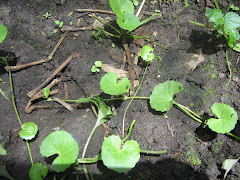
Industrial uses of moringa oil
The oil content of de-hulled seed (kernel) is approximately 42 %. The oil is brilliant yellow. It is used as a lubricant for fine machinery such as timepieces because it has little tendency to deteriorate and become rancid and sticky. It is also useful as a
 vegetable cooking oil. The oil is known for its capacity to absorb and retain volatile substances and is therefore valuable in the perfume industry for stabilising scents. The free fatty acid content varies from 0.5 to 3 %.
vegetable cooking oil. The oil is known for its capacity to absorb and retain volatile substances and is therefore valuable in the perfume industry for stabilising scents. The free fatty acid content varies from 0.5 to 3 %.What development potential for Moringa products.
The seed oil of Moringa contains approximately 13 % saturated fatty acids and 82 % unsaturated fatty acids. It has a particularly high level of oleic acid (70 %) . Other vegetable oils normally contain only about 40 % oleic acid.
 Moringa as a source of biogas
Moringa as a source of biogasMoringa plants (approximately 30 days old) were milled together with water. The fibre was separated by filtration through a mesh with 5 mm pores and the liquid fraction produced was then added to a biogas reactor. With an average feed of 5.7 g of volatile solids the gas production was 580 liters of gas per 1 kg of volatile solids. The average methane content of the gas was 81 %.
Moringa as a
 forage plant
forage plantThe nutritional characteristics of the Moringa tree are excellent so it can easily be used as a fresh forage material for cattle. The leaves are rich in protein, carotene, iron and ascorbic acid and the pod is rich in the amino acid lysine. Another important advantageous characteristic of Moringa is its high productivity of fresh material per unit area compared with other forage crops (see below; Productivity of Moringa plantations). Moringa is especially useful as a forage for cattle both economically and productively given the problems facing typical cattle breeders (70 % of the national herd in Nicaragua is in the hands of these small cattle producers). Major among these problems are:
a) Low availability of feed during the dry season, which extends from December through May.
b) Lack of capacity for pasturing animals as farmers generally own small areas and these are typically not well worked or managed.
c) Nutritional imbalances caused by a lack of access to proteins, carbohydrates and minerals.
d) Farmers have little control over the reproductive activities of their animals either as regards timing of mating or quality of sire.
Moringa kernel and meal as animal feed
The kernels of Moringa can be crushed and its water extract used for purification of water, and the water extract is a viable replacement coagulant for chemicals such as aluminium sulphate (alum) in developing countries. As moringa oil can be used for human consumption, the water extract of seed meal (obtained after extraction of oil) has been used to purify water. This residue is still active as a coagulant. We determined chemical constituents, organic matter digestibility, gross and metabolizable energies, rumen degradable and undegradable nitrogen, non-protein nitrogen, pepsin degradability of proteins and presence of anti nutritional factors in kernels, seed meal (fat-free kernel) and in the residues obtained after removal of water soluble coagulants from kernels and seed meal obtained from the Moringa plant.
Amino acid composition of these four fractions of kernels has also been analysed. This information together with reported above for the Moringa forage will pave the way for better utilization of different fractions/residues of Moringa, which are generated as by-products in the process of extraction of oil, growth hormones and coagulants, as animal feed.






No comments:
Post a Comment